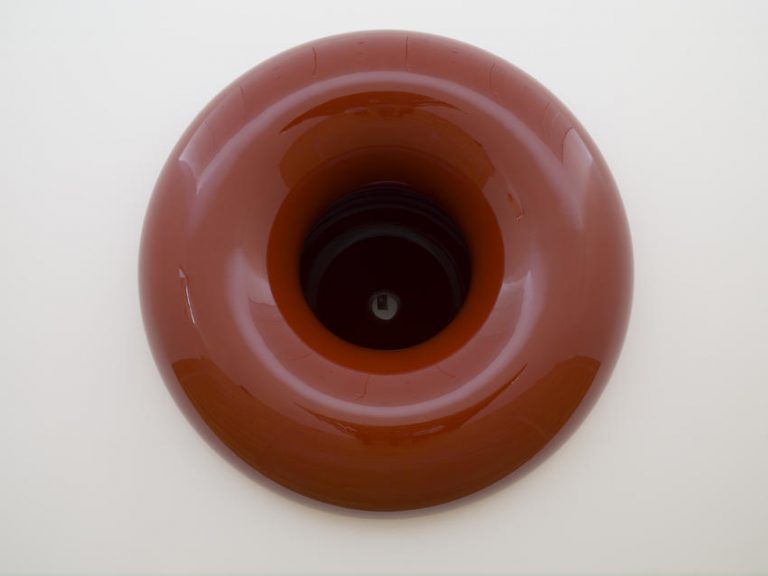We acknowledge the Traditional Owners of the land on which the Queensland Art Gallery | Gallery of Modern Art stands and recognise the creative contribution First Australians make to the art and culture of this country.

Anish Kapoor / England b. 1954 / Untitled 2006–07 / Resin fibreglass and lacquer / Commissioned 2006 with funds from the Queensland Art Gallery Foundation in recognition of the contribution to the Gallery by Doug Hall, AM (Director 1987–2007) / Collection: Queensland Art Gallery | Gallery of Modern Art/ © Anish Kapoor
Anish KapoorUntitled 2006–2007
Not Currently on Display
‘Red is the colour I’ve felt very strongly about . . . Of course it’s the colour of the interior of our bodies. In a way it’s inside out . . . I’m interested in the idea that form in a sense turns itself inside out, that the inside and the outside are equivalent to each other.’1 The scale and saturated colour of Anish Kapoor’s spectacular and extraordinary sculptures engage the viewer both physically and psychologically.
Using simple, strong forms, these enigmatic works enable viewers to directly experience primal states of being, from sensations of emptiness, to darkness, intimacy and desire. In this especially commissioned work, perception is manipulated through the use of a single rich colour, a highly reflective surface and monumental form. Together they form a sculpture that inspires an elemental encounter with infinity — the work appears to devour and permeate our sense of space.
This experience — the heightening of the senses and an instinctive response to form — is at the heart of Kapoor’s practice. His artworks are remarkable sensory encounters. Born in India in 1954, and currently living and working in the United Kingdom, Kapoor is one of the most influential artists working today.
He uses the language of sculpture to explore ideas of metaphysics and the sublime, and his dramatic and monumental works often push the scope of sculpture into the realm of architecture.
Endnotes:
1 Anish Kapoor in Lynne Seear, ‘Turning the world inside out: A new work by Anish Kapoor’, Artlines no.1, 2008, pp.18–25.
In his practice, Anish Kapoor draws on his varied cultural heritage, including his Indian and Jewish ancestry and his mainly British art education. After deciding to become an artist at the age of 18, he moved to London to study. Kapoor continues to live and work in Britain and is identified as one of the New British Sculpture artists.
His works are highly engaging, both visually and physically, and they are also rich in philosophical references. Kapoor’s artistic development has been deeply informed by psychologist Carl Jung’s beliefs of universal characters (or archetypes) in people, as well as the Hinduism belief of dualism (one against the many) or the contrast between truth and reality.
One of Kapoor’s main undertakings as an artist is to understand the ‘wholeness’ of our experience of life.
Discussion Questions
1. What processes would have been involved in creating this work? Why is scale an important consideration?
2. Duality, Jungian archetypes and ideas of inside/outside are influences in Kapoor’s practice. Where in this work are these influences apparent?
3. Untitled encourages the viewer to move around in the gallery space and invites close inspection. How does Kapoor confuse our senses and alter our ways of seeing?
4. How does passing through abstracted spaces model ideas of cosmos and community?
Classroom Activities
1. The work’s sensory and interactive nature raises ideas about wholeness and duality. Write an analysis of Untitled, referring to the artist’s use of form, shape, scale and materials.
2. Explore how the selection of materials can communicate meaning. Draw and plan an artwork that explores the relationship between the real and imagined.
3. In our day-to-day experiences what aspects do we embrace, and what aspects do we ignore or turn a blind eye to? Make a list of opposing words in your visual arts diary, and sketch ways you could represent both the mundane and the sublime moments that make up human experience.